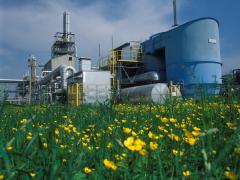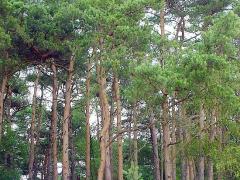New anthropogenic land use estimates for the Holocene; HYDE 3.2
This paper presents an update and expansion of the History Database of the Global Environment (HYDE, v 3.2.000). HYDE is and internally consistent combination of updated historical population estimates and enhanced allocation algorithms with weighting maps for land use which are time-dependent. Categories include cropland, with a new distinction into irrigated and rain fed crops (other than rice) and irrigated and rain fed rice. Also grazing lands are provided, divided into more intensively used pasture and less intensively used rangeland. Population is represented by maps of total, urban, rural population and population density as well as built-up area. The period covered is 10 000 BCE to 2015 CE.
We estimate that global population increased from 4.4 million people in 10000 BCE to 7310 million in 2015 CE, resulting in a global population density increase of < 0.1 cap km−2 to almost 56 cap km−2 respectively. The urban built-up area evolved from almost zero to roughly 450 Mha at present, still only less than 0.5 % of the total land surface of the globe.
Cropland occupied approximately less than 1 % of the global land area for a long time period until 1000 CE, quite similar like the grazing land area. In the next centuries the share of global cropland slowly grew to 2.3 % in 1700 CE (ca. 294 Mha), 4.5 % in 1850 CE (580 Mha) and 11 % in 2015 CE (ca. 1564 Mha). Cropland can be further divided into rain-fed and irrigated land, and these categories can be further divided into rice and non-rice. Rainfed croplands are much more common with 2.2 % in 1700 CE (294 Mha), 4.2 % (552 Mha) in 1850 CE and 10 % (1298 Mha) in 2015 CE, while irrigated croplands used less than 0.05 % (5 Mha), 0.2 % (28 Mha) and 2.0 % in 2015 CE (266 Mha) resp. We estimate the irrigated rice area (paddy) at 0.02 % in 1700 CE (2.7 Mha), 0.1 % (127 Mha) in 1850 CE and 0.6 % in 2015 CE (73 Mha).
The share of grazing land grew from 5.1 % in 1700 CE (668 Mha) to 9.2 % in 1850 CE (1200 Mha) and 25.2 % in 2015 CE (3284 Mha). Land used for grazing can be divided into more intensively used pasture and less (or not) managed rangeland. Pasture occupied 1.1 % in 1700 CE (149 Mha), 2.0 % in 1850 CE (257 Mha) and 6.1 % (800 Mha) in 2015 CE, while rangelands usually occupy more space due to the occurrence in more arid regions and thus lower yields to sustain livestock. We estimate 4 % in 1700 CE (519 Mha), 7.2 % in 1850 CE (943 Mha) and 19 % in 2015 CE (2483 Mha).
in review
Authors
Specifications
- Publication title
- New anthropogenic land use estimates for the Holocene; HYDE 3.2
- Publication date
- 7 December 2016
- Publication type
- Publication
- Magazine
- Earth System Science Data
- Product number
- 2847




